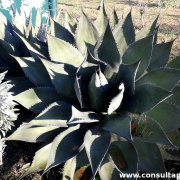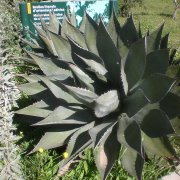Care of the succulent plant Agave shawii or Coastal agave |
|
The Agave genus, a subfamily of the Agavoideae, comprises some 300 species of succulent plants native to Mexico, Central America and the Southwest of the USA. Some species are: Agave shawii, Agave striata, Agave potatorum, Agave parryi, Agave parrasana, Agave guadalajarana, Agave impressa, Agave macroacantha, Agave filifera, Agave bracteosa, Agave attenuata, Agave americana, Agave stricta, Agave victoria-reginae, Agave ferdinandi-regis, Agave sisalana, Agave angustifolia, Agave vilmoriniana, Agave univittata, Agave lechuguilla, Agave datylio. Common names: Coastal agave, Shaw's agave. This species is native to Baja California (Mexico) and southern California (USA). They are slow growing and medium sized succulent plants that do not reach 1 meter (3.28 feet) in height. They have green or bluish-green leaves with abundant spines on their margins. The flowers are yellowish or reddish and arise in panicles on a long central stem but do not appear until the plant is about 15 years old and then dies before having produced suckers at the base. These plants are ideal for Mediterranean coastal rockery gardens, as isolated specimens or in large pots. Agave shawii can be grown in full sun or light shade exposure. Coastal agave is able to tolerate frost down to around -3 ºC (26.6 ºF). It's important that the soil is well drained, for which a garden substrate with 40% coarse siliceous sand can be used. Wait until the soil has dried before watering again. In winter, watering is reduced to watering only once a month (if it doesn't rain). Pruning and fertilization are not necessary. If there is no excess watering, Agave shawii does not have pest and disease problems. Shaw's agave can be propagated from seeds sown in spring or through the suckers it produces at the base. |
Images of the succulent plant Agave shawii or Coastal agave |
Find plants
Agave shawii or Coastal agave | Care and Growing
© 2024 FavThemes

